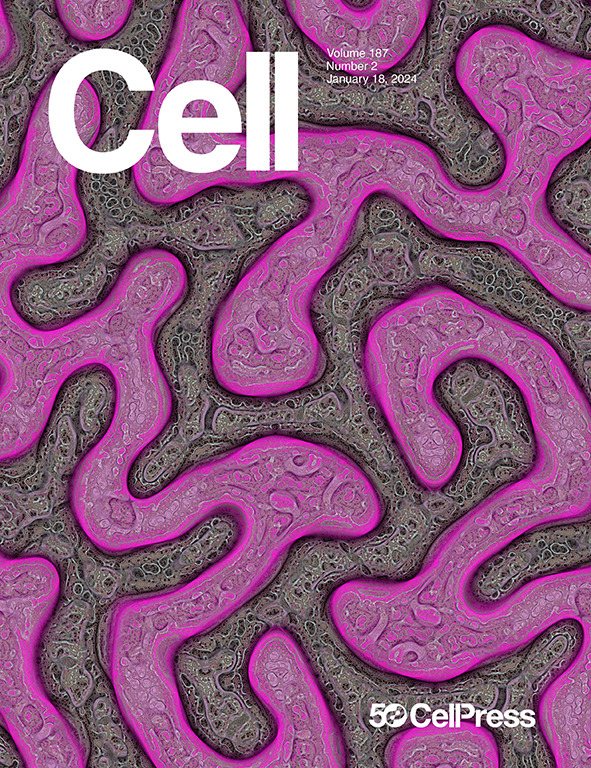Multiscale drug screening for cardiac fibrosis identifies MD2 as a therapeutic target
IF 45.5
1区 生物学
Q1 BIOCHEMISTRY & MOLECULAR BIOLOGY
引用次数: 0
Abstract
Cardiac fibrosis impairs cardiac function, but no effective clinical therapies exist. To address this unmet need, we employed a high-throughput screening for antifibrotic compounds using human induced pluripotent stem cell (iPSC)-derived cardiac fibroblasts (CFs). Counter-screening of the initial candidates using iPSC-derived cardiomyocytes and iPSC-derived endothelial cells excluded hits with cardiotoxicity. This screening process identified artesunate as the lead compound. Following profibrotic stimuli, artesunate inhibited proliferation, migration, and contraction in human primary CFs, reduced collagen deposition, and improved contractile function in 3D-engineered heart tissues. Artesunate also attenuated cardiac fibrosis and improved cardiac function in heart failure mouse models. Mechanistically, artesunate targeted myeloid differentiation factor 2 (MD2) and inhibited MD2/Toll-like receptor 4 (TLR4) signaling pathway, alleviating fibrotic gene expression in CFs. Our study leverages multiscale drug screening that integrates a human iPSC platform, tissue engineering, animal models, in silico simulations, and multiomics to identify MD2 as a therapeutic target for cardiac fibrosis.

针对心脏纤维化的多尺度药物筛选确定 MD2 为治疗靶点
心脏纤维化会损害心脏功能,但目前还没有有效的临床疗法。为了满足这一尚未得到满足的需求,我们利用诱导多能干细胞(iPSC)衍生的心脏成纤维细胞(CFs)对抗纤维化化合物进行了高通量筛选。利用 iPSC 衍生的心肌细胞和 iPSC 衍生的内皮细胞对初步候选化合物进行反筛选,排除了具有心脏毒性的化合物。这一筛选过程确定了青蒿琥酯作为先导化合物。在受到损伤性刺激后,青蒿琥酯可抑制人原代心肌细胞的增殖、迁移和收缩,减少胶原沉积,并改善三维工程心脏组织的收缩功能。青蒿琥酯还能减轻心脏纤维化,改善心衰小鼠模型的心脏功能。从机制上讲,青蒿琥酯靶向髓系分化因子2(MD2)并抑制MD2/类托尔受体4(TLR4)信号通路,从而减轻了CFs中纤维化基因的表达。我们的研究利用多尺度药物筛选,整合了人类iPSC平台、组织工程、动物模型、硅模拟和多组学,将MD2确定为心脏纤维化的治疗靶点。
本文章由计算机程序翻译,如有差异,请以英文原文为准。
求助全文
约1分钟内获得全文
求助全文
来源期刊

Cell
生物-生化与分子生物学
CiteScore
110.00
自引率
0.80%
发文量
396
审稿时长
2 months
期刊介绍:
Cells is an international, peer-reviewed, open access journal that focuses on cell biology, molecular biology, and biophysics. It is affiliated with several societies, including the Spanish Society for Biochemistry and Molecular Biology (SEBBM), Nordic Autophagy Society (NAS), Spanish Society of Hematology and Hemotherapy (SEHH), and Society for Regenerative Medicine (Russian Federation) (RPO).
The journal publishes research findings of significant importance in various areas of experimental biology, such as cell biology, molecular biology, neuroscience, immunology, virology, microbiology, cancer, human genetics, systems biology, signaling, and disease mechanisms and therapeutics. The primary criterion for considering papers is whether the results contribute to significant conceptual advances or raise thought-provoking questions and hypotheses related to interesting and important biological inquiries.
In addition to primary research articles presented in four formats, Cells also features review and opinion articles in its "leading edge" section, discussing recent research advancements and topics of interest to its wide readership.
 求助内容:
求助内容: 应助结果提醒方式:
应助结果提醒方式:


